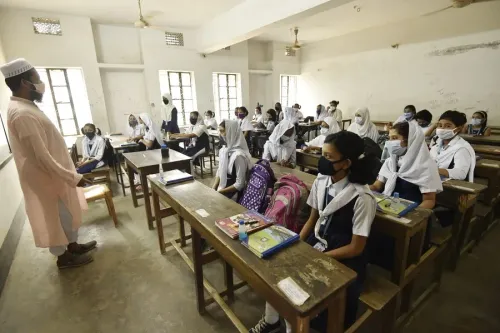South Korea Anticipates First Birth Rate Uptick in Nearly a Decade: Statistics

Synopsis
Key Takeaways
- Projected increase in birth rate for 2024.
- 220,094 newborns between January and November.
- Significant regional disparities in birth rates.
- Government initiatives to encourage marriage and child-rearing.
- South Korea faces demographic challenges with an aging population.
Seoul, Jan 27 (NationPress) South Korea's birth rate is expected to rise in 2024, marking the first increase in nine years, although substantial regional variations are evident, according to the statistics agency's report released on Monday.
The count of newborns from January to November reached 220,094, reflecting a 3 percent rise compared to the previous year, as per data gathered by Statistics Korea.
This uptick follows a 7.7 percent year-on-year decline in 2023, extending the downward trend for the eighth consecutive year, as reported by the Yonhap news agency.
The figures indicate that the number of births in Seoul and other urban areas has surpassed last year’s numbers, while growth in other regions has been relatively subdued. Births in Seoul displayed a consistent upward trajectory throughout last year, with only minor declines in January and March.
Significantly, the city experienced double-digit growth in births for three straight months beginning in September. Likewise, Gyeonggi Province, which encircles the capital, also noted double-digit growth in birth rates during the three months from September to November.
Conversely, the growth rates in North Chungcheong Province and the southern island of Jeju were more modest, showing year-on-year increases of 3.1 percent and 6 percent in November, respectively.
The agency attributed these regional disparities to the concentration of newlyweds and individuals in their 20s and 30s primarily residing in metropolitan areas.
South Korea has faced ongoing challenges with a declining birth rate, as many young people choose to postpone or opt out of marriage and parenthood.
By 2045, the country is projected to have one of the oldest populations globally, with seniors predicted to constitute 37.3 percent of the total population.
As of December, government statistics indicated that the number of South Koreans aged 65 or older reached 10.24 million, representing 20 percent of the nation's total population of 51.22 million.
In response to these demographic challenges, the government has implemented a range of policies aimed at promoting marriage and supporting child-rearing, including financial incentives for newlyweds and enhanced childcare support.









